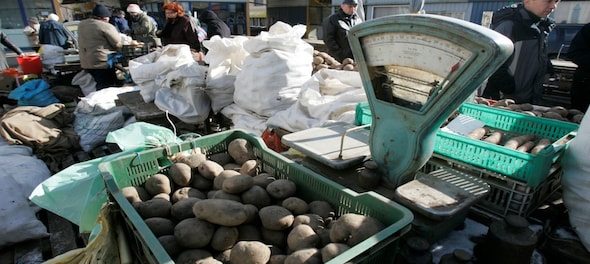
Earlier this week, data on the wholesale price index-based inflation falling to 29-month lows in March brought much cheer to Indians, . This is of greater significance as fall in inflation was not limited to few set of commodities, but spread across categories. Ministry of Commerce & Industry attributes the decline in rate of inflation in March to a fall in prices of basic metals, food products, textiles, non-food articles, minerals, rubber & plastic products, crude petroleum and natural gas.
RBI’s endeavour to reduce inflation in India has undeniably delivered positive outcome in the latest WPI and CPI data. Hence, the pertinent question to ask now is whether consumers have really stopped feeling the pinch of inflation on their pockets. This may well be a dubious discussion.
While the Ministry of Commerce & Industry’s data suggests a fall in inflation rate, it may not necessarily mean that consumers now have a higher disposable income, as the rise in inflation last year was disproportionate to the rise in income levels of Indian households. Hence the demand for goods and services is growing at a decelerating pace. Dabur, a prominent FMCG player, in its March ended quarterly update states “demand trajectory across both urban and rural markets is falling short of a full recovery”.
In a high inflation scenario, consumers start to downgrade their product preferences and hence discretionary spends are the first to be cut. Dabur’s commentary on slowdown in personal care categories in its healthcare portfolio validates this. Furthermore, Nykaa, an e-commerce platform for beauty and fashion products, said it witnessed a pullback in discretionary spending which impacted its fashion business.
A recent trend has emerged this month, wherein commodities prices have started to escalate sharply …. from rice to sugar to metals. The rise in metal prices can well be attributed to positive macro-economic data of China, a major consumer as well as producer of metals. This country’s stronger than expected GDP growth of 4.5% is the highest in a year. Additionally, China’s economy is likely to see another boost from government stimulus later this year. Alongside, second quarter of calendar year is seasonally strong for construction activities. All such factors augur well for metal prices.
Aluminium is at 6 weeks high, nickel at 7 weeks high, tin at 8 week high, while copper is at 1 month high. Notably, copper prices are being boosted by lowest inventory levels since 2005, while zinc inventories are lowest since 1989. Within the agricultural space, sugar is another well traded commodity which is soaring owing to lower production levels and curb on exports this year for its alternate usage in domestic ethanol industry.
Gold and silver metals have also witnessed a strong up move of 5 percent and 14 percent respectively since the start of this month compared with March average. Gold prices peaked $2,000/ounce for the first time since August 2020.
India's staple food, rice, is also grappling with inflation. According to Fitch Solutions, global rice shortage is set to be largest in 20 years as rice production has been falling from the US to China to the European Union.
Additionally, soaring heat in April created price hikes in variety of agricultural produce like cocoa and milk, which means daily beverages for a consumer is expected to cost more. A large part of this price rise may also be attributed to the recent unseasonal rains in various parts of the country. Hence, a timely monsoon will be crucial to keep prices in check this year. Dabur in its March ended quarterly update says “While a more visible and sustained recovery in FMCG demand is anticipated in the coming quarters based on a variety of improving macro indicators, a healthy monsoon season will be critical for the same to materialise.”
Check out our in-depth Market Coverage, Business News & get real-time Stock Market Updates on CNBC-TV18. Also, Watch our channels CNBC-TV18, CNBC Awaaz and CNBC Bajar Live on-the-go!


Congress appeals to EC to increase voting duration, says media report
Apr 28, 2024 4:04 PM
Loud echoes of Maratha reservation issue in Maharashtra
Apr 28, 2024 3:44 PM
Delhi Congress chief Arvinder Singh Lovely resigns
Apr 28, 2024 10:54 AM
Lok Sabha polls: Voter turnout in Rajasthan over 62%, down by 4% since 2019
Apr 28, 2024 8:49 AM

